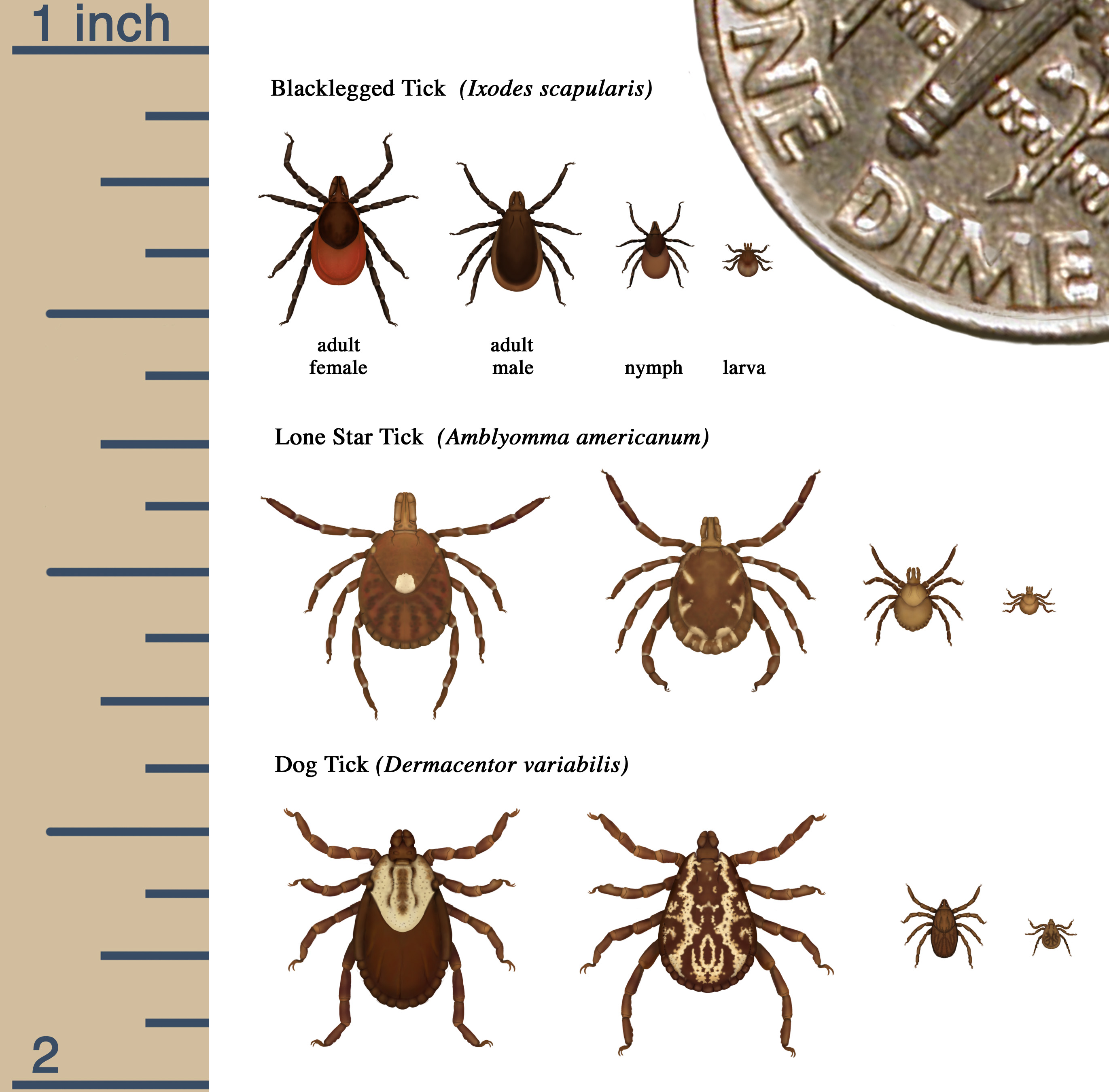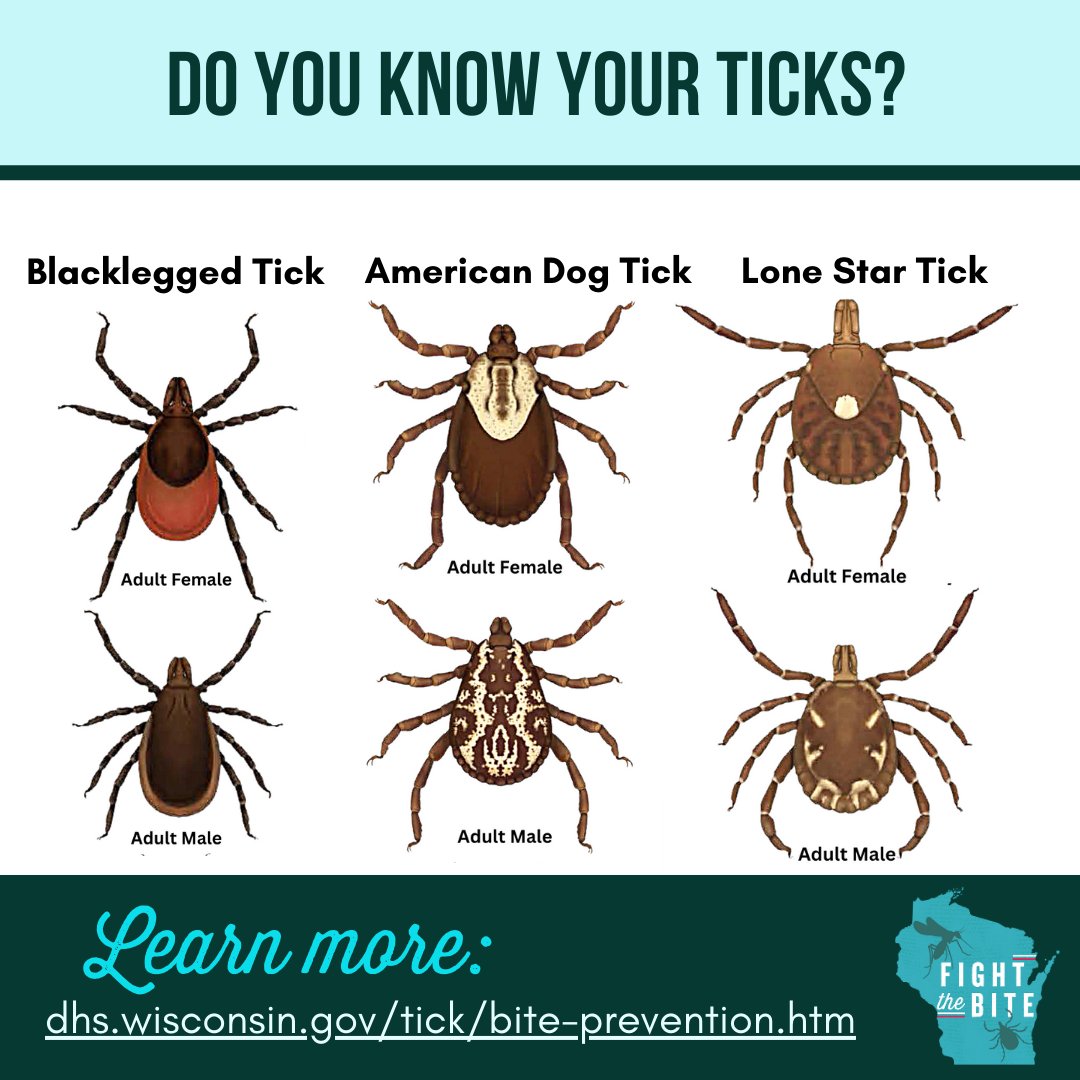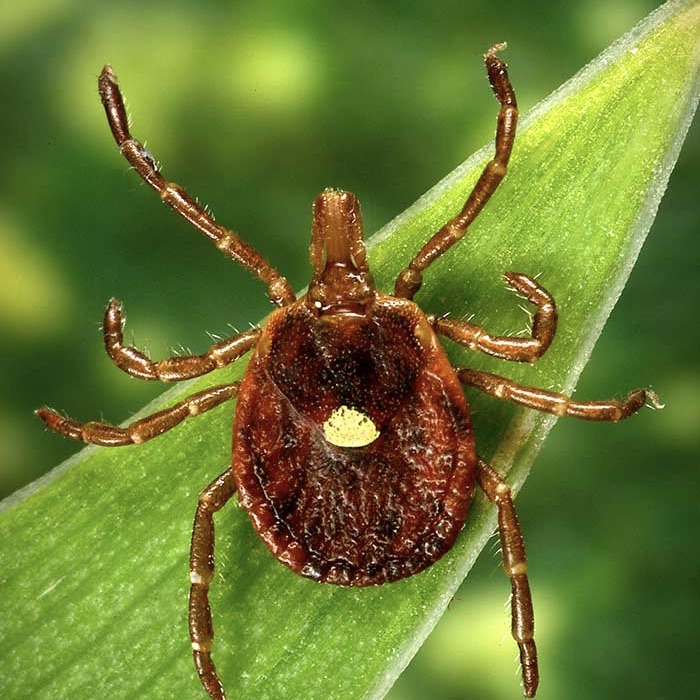Have you ever felt that little creepy-crawly sensation, or maybe spotted something tiny on your furry friend, and your heart just does a quick little "tick tock tick tock"? It's a feeling many of us know, a tiny worry that can grow quite big. Those little moments of discovery can bring a lot of questions about what's going on and what to do next.
It's interesting, really, how something so small can cause such a stir. We often use symbols, like a checkmark, to show when something is good or done, but when it comes to these tiny visitors, the "tick tock tick tock" feeling is more about a potential problem than a completed task. We're talking about those little creatures that like to hitch a ride, the ones that can make us feel a bit uneasy, especially when they show up unexpectedly.
This whole situation, you know, it brings up a lot of thoughts about keeping our families and our pets safe. It's about being aware of what's out there, what to look for, and what steps to take if you find one. There's a lot to learn about these small beings and how they fit into our outdoor lives, and it's something many people wonder about, so it's worth talking about.
Table of Contents
- What's That "Tick Tock Tick Tock" Sound? Getting to Know These Little Creatures
- How Do We Spot These "Tick Tock Tick Tock" Guests? Looking for Signs
- Why Is It So Important to Identify Ticks, "Tick Tock Tick Tock"?
- Keeping Your Loved Ones Safe- "Tick Tock Tick Tock" Prevention Steps
- What Should You Do After a "Tick Tock Tick Tock" Bite?
- Are All Tick Treatments the Same, "Tick Tock Tick Tock"? Exploring Options
- Are There Natural Ways to Handle "Tick Tock Tick Tock" Concerns?
- The "Tick Tock Tick Tock" of Yard Care- Protecting Your Space
What's That "Tick Tock Tick Tock" Sound? Getting to Know These Little Creatures
When we talk about those tiny little creatures that make us go "tick tock tick tock" with a bit of worry, we are usually thinking about ticks. These are, you know, external parasites. What that really means is they live by finding a host, like a mammal, a bird, or sometimes even a reptile or amphibian, and feeding on their blood. It’s their way of getting what they need to survive, and it’s something they’ve been doing for a very, very long time, though exactly when they first showed up is a bit of a mystery.
In the United States, there are, apparently, two main groups of these tiny beings. You have what people call "hard ticks," which are part of the Ixodidae family, and then there are the "soft ticks," belonging to the Argasidae family. There are so many different kinds, too; about 700 types of hard ticks and 200 types of soft ticks are found across the globe. Each kind has its own little habits, its own way of living, and its own preferred places to hang out, which is pretty interesting when you think about it.
Knowing about these different types, you know, helps us understand a bit more about what we might encounter. Some are more common in certain areas, and they all have slightly different characteristics. It’s like, some prefer to wait on tall grass or bushes, just waiting for someone to brush by, while others might hide in cracks and crevices. They are, in a way, quite patient hunters, often just sitting still, waiting for their next meal to come along. This waiting game is a big part of their "tick tock tick tock" strategy.
How Do We Spot These "Tick Tock Tick Tock" Guests? Looking for Signs
Finding one of these tiny visitors, you know, can be a bit startling. It’s that moment when you or a loved one, maybe even your pet, discovers a small bump or a dark spot that wasn't there before, and your mind starts to go "tick tock tick tock" with questions. Often, people find them after spending time outdoors, perhaps after a walk in the woods or through tall grass. They tend to cling on, and sometimes you don't even feel them at first, which can be a bit unnerving.
There are some simple ways to think about checking for them. After being outside, it’s a good idea to check yourself, your kids, and your pets. Look in places where they might like to hide, like behind the ears, in the hair, in armpits, or in the groin area. For pets, it’s often around their ears, neck, and between their toes. It’s a bit like a scavenger hunt, but for something you really don't want to find. You are, in some respects, looking for a very small, attached speck that might be moving, or just sitting there.
Learning what a tick looks like, you know, can really help. They can be quite small, sometimes no bigger than a poppy seed, especially when they haven't fed yet. As they feed, they get bigger and rounder. Knowing the common types in your area can also be a plus. There are resources, like websites, that show pictures and give tips for identifying these little creatures and the marks they might leave behind. It’s just a little bit of knowledge that can make a big difference in those "tick tock tick to tock" moments of discovery.
Why Is It So Important to Identify Ticks, "Tick Tock Tick Tock"?
When you find one of these little creatures, that "tick tock tick tock" feeling isn't just about the creature itself; it’s about what it might carry. Knowing what kind of tick it is, you know, is really quite important for a few reasons. The most important one, by far, is figuring out if that tick might be carrying any tiny germs or pathogens that it could pass on. These are the things that can cause illnesses, and nobody wants that.
Different kinds of ticks, you see, are known to carry different kinds of potential problems. So, if you can identify the type of tick, it gives you a clue about what to watch out for. For example, some ticks are known for carrying the bacteria that causes Lyme disease, while others might be linked to different conditions. It’s like knowing what kind of plant you picked; some are harmless, others might cause a rash. This bit of information can guide you or your doctor on what signs and symptoms to look for in the days and weeks after a bite, which is pretty useful.
While it’s typically much easier to identify them once they've had a little meal and are a bit bigger, even a tiny one can be a concern. That's why, you know, organizations like the CDC have websites dedicated to helping people learn about ticks and the illnesses they can cause. They give advice on what to do after a bite, including how to get the tick off safely and what signs to watch for. It’s all about being informed and taking steps to protect yourself and your loved ones from those worrying "tick tock tick tock" moments that can lead to something more serious.
Keeping Your Loved Ones Safe- "Tick Tock Tick Tock" Prevention Steps
Preventing these little "tick tock tick tock" encounters is often the best approach. There are some simple things you can do to make it less likely for them to find you or your pets. For people, especially if you're going to be out in areas where ticks might be, like the woods or tall grassy fields, wearing long sleeves and pants can help. Tucking your pants into your socks can also create a bit of a barrier, making it harder for them to get to your skin. It’s just a little bit of extra protection that can make a difference.
Using insect repellents can also be a good idea. There are products specifically made to deter ticks that you can put on your skin or clothes. Always read the instructions carefully, you know, to make sure you're using them safely and effectively. For pets, especially dogs who love to explore, like a two-year-old Weimaraner who enjoys hikes and walks in the woods, there are various treatments available. These can help keep those "tick tock tick tock" worries at bay.
Beyond personal protection, thinking about your yard can also play a part. Ticks often wait in overgrown areas. Keeping your grass cut short and clearing away leaf litter can make your yard less inviting for them. It’s about creating a less appealing environment, so they are less likely to hang around. These steps, taken together, can really help reduce the chances of those unwanted "tick tock tick tock" visitors making themselves at home on you or your furry family members.
What Should You Do After a "Tick Tock Tick Tock" Bite?
So, you've found one, and that "tick tock tick tock" feeling has turned into a real situation. The first thing to do is remove it properly. There are specific ways to do this to make sure you get the whole thing out. You should use fine-tipped tweezers to grasp the tick as close to the skin's surface as possible. Then, pull upward with steady, even pressure. Don't twist or jerk the tick, as that can cause the mouth-parts to break off and stay in the skin. After removing it, clean the bite area and your hands with rubbing alcohol or soap and water. It's really quite important to do this carefully.
After the tick is gone, you know, the next step is to watch for any signs or symptoms of illness. This is where that "tick tock tick tock" waiting game begins. You should keep an eye on the bite area for a rash, especially a bull's-eye rash, which can be a sign of Lyme disease. Also, pay attention to any flu-like symptoms, such as fever, chills, headache, or muscle aches. These can show up days or even weeks after the bite.
If you or your pet develop any of these symptoms, it’s a good idea to get in touch with a doctor or veterinarian. You can, in some cases, save the tick in a sealed bag or container so it can be identified, which might help with diagnosis. Remember, the timing of the bite and the type of tick can be really helpful information for a healthcare professional. It’s about being proactive and making sure that little "tick tock tick tock" moment doesn't turn into a bigger health concern.
Are All Tick Treatments the Same, "Tick Tock Tick Tock"? Exploring Options
When it comes to protecting our pets from those little "tick tock tick tock" nuisances, there are quite a few options out there, and they don't all work in the same way. Some treatments are designed to repel ticks, meaning they keep them from getting on your pet in the first place. Others are made to kill ticks once they've already gotten on, or even after they've started to feed. For people living in areas with a lot of ticks, like where I live, it’s often preferred to have something that both repels and kills, which makes sense, you know.
Take products like Frontline and Frontline Plus, for example. These are not repellents. They work by killing the tick after it’s on the dog. The idea is that they kill the tick within the 24 hours it typically takes for the tick to pass on any diseases. So, while a tick might still get on your dog, the treatment aims to stop any illness from being transmitted. However, some pet owners, like one who had a toy poodle diagnosed with tick fever even after using Frontline monthly, might feel that it isn't having the desired effect, which can be a bit concerning, you know.
Then there are other options, like Bravecto, which is said to kill lone star ticks for up to eight weeks. This kind of extended protection can be really appealing for busy pet owners. There are also different ways these treatments are given. Some are "spot-on" types, applied to the skin, while others might be oral medications or even collars. A groomer mentioned that many flea and tick products are, in fact, toxic chemicals, and for dogs with fleas, she uses a citrus-based shampoo, but for residual effects, there are no simple answers. It’s a bit of a puzzle to find what works best for your pet and your particular situation, especially with that constant "tick tock tick tock" worry in the back of your mind.
Are There Natural Ways to Handle "Tick Tock Tick Tock" Concerns?
Given that some flea and tick products can be quite strong chemicals, it's natural for people to wonder if there are other, perhaps gentler, options. This is where the "tick tock tick tock" of alternative approaches comes in. Some people turn to more natural remedies, like using sulfur and neem oil-based products. These seem to work for many people, reportedly killing fleas and a good number of other tiny parasites. It’s a different way of thinking about protection, moving away from synthetic chemicals.
It's interesting to note that even with all the options, many people still rely on well-known brands. For example, almost everybody someone knows in Central Florida seems to be using Frontline or Comfortis. This shows that while there are natural alternatives, the more traditional treatments are still very widely used. The choice, you know, often comes down to personal preference, what your vet recommends, and what you feel comfortable using on your pet, especially when that "tick tock tick tock" concern is present.
One person even mentioned getting a free flea and tick collar with their Revolution product, which was said to last for six months and be waterproof. However, the warnings on it sounded quite serious, making them afraid to use it. This highlights a common dilemma: wanting protection but also worrying about the potential downsides of the treatments themselves. It’s a balance, really, between the "tick tock tick tock" of prevention and the desire for safety for our beloved animals.
The "Tick Tock Tick Tock" of Yard Care- Protecting Your Space
Beyond protecting ourselves and our pets directly, thinking about our outdoor spaces can also help with those "tick tock tick tock" worries. Ticks, you know, usually wait for hosts by sitting on vegetation and then falling off onto them. This means that managing your yard can be a pretty important step in keeping them away from your home environment. It’s about making your yard less appealing to these tiny creatures, so they don’t set up shop there.
Keeping your lawn trimmed short is one good way to start. Ticks prefer taller grass and brush where they can easily climb and wait. Regularly mowing your lawn can reduce these hiding spots. Clearing away leaf litter, brush, and other yard debris can also help. These are all places where ticks like to hang out and breed. It’s like, if you remove their favorite waiting areas, they are less likely to stick around, which can help quiet that "tick tock tick tock" feeling.
For more widespread issues, some people consider using insecticides on their yard. If you go this route, it's really, really important to read the label on the insecticide very carefully. You need to understand how to apply it safely and, crucially, how long you need to wait before letting children and pets back onto the treated yard. This ensures that while you're tackling the "tick tock tick tock" problem in your yard, you're not creating new safety concerns for your family and animals. It’s all about being thoughtful and careful in how you manage your outdoor living areas.
This discussion has touched upon what ticks are, how to spot them, why identifying them matters, and ways to prevent and treat bites for both people and pets. We've also looked at different kinds of treatments, from traditional to more natural approaches, and how managing your yard can play a part in keeping these tiny creatures at bay. The aim is to help you feel a bit more prepared and less worried when those "tick tock tick tock" moments arise.



